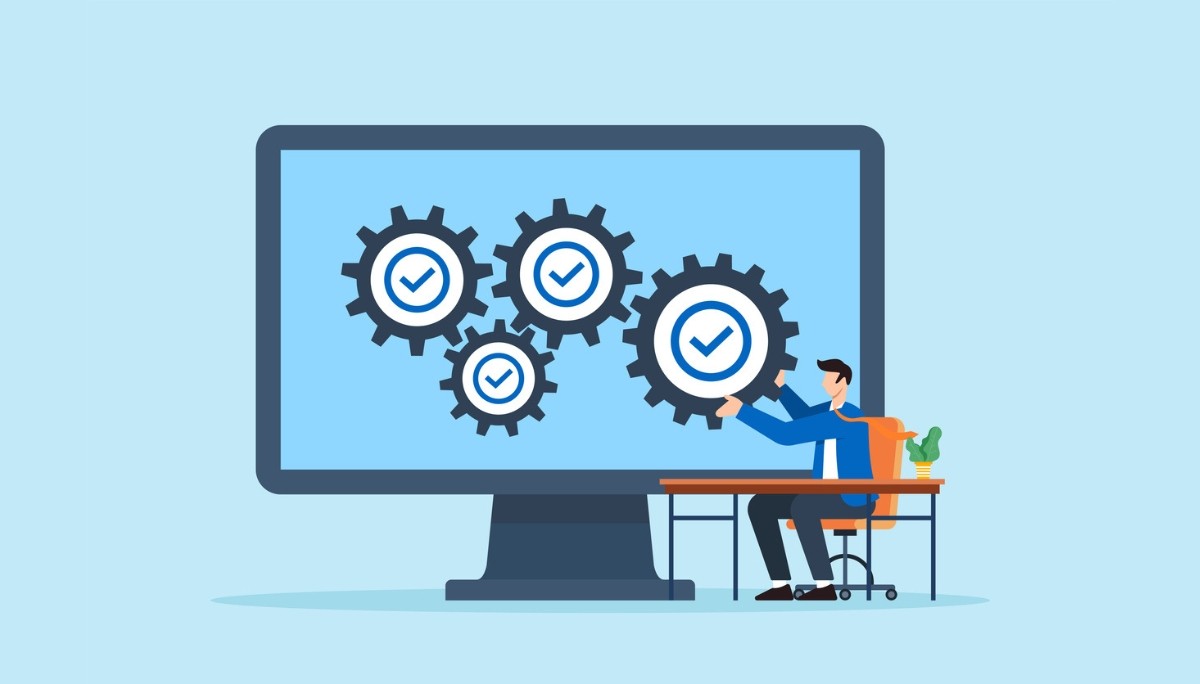10 Best Data Modeling Tools and Database Modeling Software
By
Liz Fujiwara
•
Sep 9, 2025
Looking to improve your data modeling process? Choosing the right tool can make all the difference in managing, analyzing, and visualizing your data effectively. In this article, we explore the top 10 data modeling tools of 2025, highlighting their key features, capabilities, and unique strengths. Whether you’re working on complex databases, designing data warehouses, or optimizing workflows, these tools are designed to improve your data management practices and help you make smarter, faster decisions. Read on to discover the perfect solution for your needs and elevate your data strategy.
Key Takeaways
Data modeling involves analyzing data objects and their relationships to optimize data organization, helping businesses meet process requirements.
Selecting the right data modeling tool is critical, with factors such as integration capabilities, scalability, and organizational needs influencing the decision.
Advanced data modeling tools enhance data quality, reduce management costs, and improve collaboration, ultimately transforming data management practices.
Understanding Data Modeling

Data modeling is the process of analyzing data objects and their relationships to fulfill business process requirements. At its core, a data model focuses on the necessary data and its organization rather than the operations performed on it. This distinction is crucial, as it ensures that data is structured to support business needs without being tied to specific processes or applications.
Different types of data models serve unique purposes in the modeling process:
Conceptual models provide a high-level view of the data landscape, focusing on major entities and their relationships.
Logical models delve deeper, detailing the attributes of each entity and the relationships between them.
Physical models translate logical structures into actual database schemas, ready for implementation.
This layered approach ensures that data is well-organized and easily understood at different levels of abstraction.
Normalization is another vital aspect of data modeling. This technique organizes data efficiently by minimizing redundancy and using unique identifiers. The data modeling process typically involves:
Defining entities
Mapping their properties
Identifying their relationships
By following this process, data modeling creates a clear and accurate representation of the data landscape, facilitating better data management and informed decision-making.
Top 10 Data Modeling Tools for 2025

As we navigate through 2025, the landscape of data modeling tools has expanded and evolved to meet the growing demands of data-driven businesses. These tools are essential for accurately visualizing and structuring data, thereby enhancing business operations. The following sections dive into the top 10 data modeling tools for 2025, each with unique features and capabilities that set them apart.
The selection of these tools is based on their ability to support various data models, integration capabilities with different database platforms, and overall data modeling functionality. From established leaders like erwin Data Modeler to innovative newcomers like dbt, these tools offer solutions for a range of functionalities that cater to diverse data modeling needs.
Whether you are looking for comprehensive metadata management, cloud-native workflows, or support for both relational and NoSQL databases, this list has something for everyone. Each of the following subsections explores a tool in detail, highlighting key features, strengths, and organizational benefits. Read on to discover the best data modeling tools that can transform your data management practices.
ER/Studio
ER/Studio is renowned for its robust metadata management capabilities, making it an excellent choice for organizations with extensive enterprise data landscapes. Its enterprise-scale modeling features are essential for effective design and documentation, ensuring that large-scale data environments are accurately represented and easily navigable. With ER/Studio, businesses gain a comprehensive understanding of their data assets, facilitating better data governance and decision-making.
Additionally, ER/Studio excels in version control and the generation of alter scripts, which are vital for maintaining consistency and integrity in dynamic data environments. These capabilities make it a powerful tool for managing complex data architectures, ensuring that all changes are tracked and that the data environment remains stable and reliable.
erwin Data Modeler
erwin Data Modeler stands out for its ability to visualize both structured and unstructured data from various sources, including relational and NoSQL databases, data warehouses, and on-premises or cloud environments. This versatility makes it a valuable tool for organizations managing diverse data landscapes. Key features include automation, model comparison, and version control, all of which streamline the data modeling process and reduce the risk of errors.
A distinguishing feature of erwin Data Modeler is its ability to turn existing schemas into reusable models, promoting efficiency and consistency in database design. The centralized model development and management functionality enables efficient workflows, ensuring all stakeholders have access to the most up-to-date models. This is particularly important for large organizations with complex data environments.
Trusted by leading organizations worldwide, including those in financial services and healthcare, erwin Data Modeler has a proven track record of reducing development time and costs while optimizing database performance. Its support for both legacy systems and new platforms makes it a versatile tool that adapts to the evolving needs of modern businesses.
dbt (Data Build Tool)
dbt (Data Build Tool) is an open-source data transformation tool designed to turn raw data into actionable insights. Emphasizing cloud-based workflows, dbt integrates software engineering practices into the data transformation process, making it a powerful tool for modern data engineering tasks. Its cloud-native design ensures that dbt can scale alongside the growing data needs of organizations.
The dbt framework for cloud-based data transformation simplifies building and maintaining data pipelines. It enables data analysts and engineers to create well-structured, efficient data models, facilitating better data management and faster insights. By focusing on transformation rather than extraction or loading, dbt serves as a specialized and invaluable asset in the data modeling toolkit.
SQL Database Modeler
SQL Database Modeler, also known as SqlDBM, is designed for creating and managing SQL database models without requiring extensive coding knowledge. Its user-friendly interface makes it accessible to both beginners and advanced users. SqlDBM supports various SQL databases, including SQL Server, MySQL, PostgreSQL, and AlloyDB, and has recently added support for Azure Synapse.
A standout feature of SQL Database Modeler is its ability to diagram an entire database without writing any code. This is particularly useful for visualizing complex database structures and ensuring all elements are accurately represented. Additionally, the tool offers forward- and reverse-engineering capabilities, allowing users to create new database models or reverse engineer existing ones.
The recent addition of support for Snowflake’s VARIANT datatype for semi-structured data further enhances SqlDBM’s versatility. This makes it a powerful tool for organizations managing a mix of structured and semi-structured data, providing comprehensive support for modern data modeling needs.
Lucidchart
Lucidchart is a versatile tool that facilitates data modeling through effective visualization. Known for its intuitive interface, Lucidchart allows users to create entity-relationship diagrams (ERDs), UML diagrams, and map database structures, providing a clear visual representation of data organization. This visual clarity is crucial for understanding and communicating complex data relationships.
One of Lucidchart’s key strengths is its real-time collaboration capabilities, enabling teams to work together seamlessly on cloud platforms. This feature enhances teamwork and ensures that all stakeholders are aligned and informed throughout the data modeling process. By supporting collaboration and providing an easy-to-use interface, Lucidchart makes data modeling more accessible and efficient.
Toad Data Modeler
Toad Data Modeler is a powerful tool that enables the creation, management, and optimization of database designs. It supports both reverse-engineering and forward-engineering, allowing users to design new database structures or update existing ones. This flexibility makes Toad Data Modeler a valuable asset for organizations looking to improve their database design processes.
The tool’s ability to optimize database designs is particularly important for improving database performance and ensuring efficient data storage and access. By providing comprehensive support for both new and existing databases, Toad Data Modeler helps organizations maintain robust and effective data architectures.
DbSchema
DbSchema is a versatile database design tool that supports both relational and NoSQL databases. Its diagram generation features allow users to visualize database structures, making it easier to understand and manage complex data environments. Interactive diagrams enhance the user experience by enabling users to explore and modify database schemas dynamically.
One of DbSchema’s standout features is its schema synchronization capability, which simplifies managing updates and changes across different database systems. This ensures all database instances remain consistent and up-to-date, reducing the risk of data discrepancies and enhancing overall data integrity.
DbSchema also promotes collaboration and understanding of data relationships, making it an ideal choice for both novice and experienced database designers. By providing tools for visualizing and managing data architecture, design schemas, and database structures, DbSchema helps organizations maintain control over their data environments and ensures all stakeholders have a clear understanding of how data is structured and used.
ArchiMate
ArchiMate provides a standardized framework for modeling complex data systems, helping organizations visualize their data environments effectively. This framework aligns business and IT strategies, ensuring that data architectures support organizational goals and objectives. A clear and consistent modeling approach from ArchiMate enables organizations to manage their data more efficiently and make informed decisions.
The tool’s ability to reverse engineer existing systems and integrate with various engineering capabilities makes it a valuable asset for organizations seeking to modernize their data environments. By providing a comprehensive view of data architectures, ArchiMate helps organizations identify areas for improvement and optimize their data management practices.
Hackolade
Hackolade is designed specifically for NoSQL and cloud databases, making it an ideal tool for organizations working with modern data architectures. It offers:
Support for various NoSQL databases, including MongoDB, DynamoDB, and Couchbase
Comprehensive modeling capabilities for these platforms
Simplification of NoSQL modeling to help organizations manage their data more effectively
Ensuring databases are well-structured and optimized
Hackolade’s focus on ease of use and comprehensive support for NoSQL databases makes it a valuable asset for organizations looking to leverage the power of NoSQL for their data management needs. By providing a clear and intuitive modeling approach, Hackolade helps organizations maintain control over their NoSQL environments and ensures that their data is organized and accessible.
Visual Paradigm
Visual Paradigm is a comprehensive modeling tool that supports data modeling, business process modeling, and system architecture design. Its versatility allows organizations to use a single tool for multiple purposes, enhancing their data management practices. Visual Paradigm’s intuitive interface and robust features make it a powerful tool for both novice and experienced data modelers.
The tool’s ability to create both logical and physical models provides a comprehensive view of data structures, ensuring that data is well-organized and easily understood. By supporting a wide range of modeling activities, Visual Paradigm helps organizations maintain control over their data environments and ensures all stakeholders understand data structures and usage.
Key Features to Look for in Data Modeling Tools

When selecting a data modeling tool, it is crucial to consider key features that will enhance your data management practices. Data governance features, for example, help maintain compliance and data quality throughout the modeling process, ensuring that data is accurate, consistent, and aligned with organizational policies and standards.
Reverse-engineering capabilities are another important feature to look for in data modeling tools. These capabilities allow users to recreate existing databases into data models, facilitating better understanding and management of legacy systems.
Integration with various database platforms is also essential, as it ensures seamless data management and migration across multi-database environments. Support for both logical and physical models is crucial for a comprehensive representation of data structures, including:
Seamless data management
Migration across different platforms
Comprehensive representation of data structures through logical models
Comprehensive representation of data structures through physical models
Logical models provide a detailed view of data attributes and relationships, while physical models translate these structures into actual database schemas. This dual support ensures that data is well-organized and ready for implementation, facilitating better data management and informed decision-making.
Benefits of Using Advanced Data Modeling Tools

Advanced data modeling tools offer a multitude of benefits that can significantly enhance data management practices. One key advantage is the improvement of data quality by ensuring accuracy and consistency through the definition of data entities and attributes. This leads to reliable and secure databases that support seamless integration and data exchange across various platforms.
Cost reductions in data storage and management are another significant benefit of using advanced data modeling tools. These benefits include:
Optimizing database performance
Normalizing data to reduce unnecessary redundancy
Improving storage efficiency
Enhancing decision-making by fostering data literacy, collaboration, and accountability across the enterprise
Collaboration features in these tools simplify feedback and accelerate iterations, aligning design decisions more effectively. Efficient data integration is achieved through data modeling, which streamlines processes and eliminates data silos. Organizations have reported notable improvements in productivity and data quality after implementing advanced data modeling solutions, highlighting the transformative power of these tools.
Integration Capabilities with Cloud Platforms

In the era of cloud computing, integration capabilities with cloud platforms are essential for modern data modeling tools. These capabilities enhance data accessibility and management by supporting automated data flows between cloud services. This not only improves efficiency in data handling but also ensures that data remains synchronized across different cloud environments, maintaining consistency and accuracy.
Data modeling tools that integrate with cloud platforms often include enhanced security features to protect sensitive information. This is particularly important for maintaining data governance and compliance in cloud data warehouses. Popular cloud platforms like AWS, Google Cloud, and Azure frequently partner with data modeling tools to provide comprehensive support across various cloud environments.
Evaluating a tool’s integration capabilities with existing systems and workflows is crucial. This ensures smooth migration of data to cloud-based infrastructures and facilitates team collaboration through a single interface. Leveraging these capabilities enables organizations to achieve a more cohesive and efficient data management strategy.
Fonzi: Revolutionizing AI Engineer Hiring
Fonzi is a curated AI engineering talent marketplace that connects companies with top-tier, pre-vetted AI engineers through its recurring hiring event, Match Day. Unlike traditional job boards, Fonzi provides high-signal, structured evaluations with built-in fraud detection and bias auditing, ensuring a fair and efficient hiring process. Most hiring decisions are made in less than three weeks, significantly accelerating the recruitment timeline.
Fonzi supports both startups and large enterprises by offering tailored resources for AI hiring needs. The platform preserves and enhances the candidate experience, ensuring that talent is engaged and well-matched with the right companies.
By making hiring fast, consistent, and scalable, Fonzi is transforming the way organizations hire AI engineers, delivering a more effective and reliable solution for sourcing top talent.
How to Choose the Right Data Modeling Tool for Your Needs
Selecting the right data modeling tool for your organization requires a thorough understanding of your specific requirements. Consider the following factors:
Organizational needs: Evaluate the unique data modeling requirements of your organization and how each tool’s features align with those needs.
Budget considerations: Different tools come with varying costs and pricing models. Ensure the chosen tool fits within your financial parameters while still offering the necessary capabilities.
Scalability: As your organization grows, your data modeling tool should accommodate increasing data volumes and complexity. Assess the tool’s ability to scale with your organization’s data needs to ensure long-term usability and effectiveness.
Use cases: Different tools may excel in different types of data modeling tasks. When evaluating options, consider the tool’s integration capabilities with existing systems and workflows, its support for various database platforms, and the types of data modeling it supports.
By considering these factors, you can select a data modeling tool that meets your current needs while supporting future growth and development.
Customer Success Stories
Real-world examples of organizations successfully using data modeling tools provide valuable insights into their practical benefits. SQLDBM, for instance, has helped over 300 clients save time, ensure consistent and error-free deployments, and integrate seamlessly with modern BI stacks. User testimonials highlight the tool’s practical features and functionality, demonstrating its effectiveness in real-world scenarios.
These success stories underscore the importance of choosing the right data modeling tool and the tangible benefits it can bring to an organization. Leveraging advanced data modeling tools enables businesses to optimize data management practices, enhance collaboration, and achieve better outcomes in multi-dimensional, data-driven initiatives.
Summary
In conclusion, the landscape of data modeling tools in 2025 offers a wide range of options to meet diverse data management needs. From solutions like erwin Data Modeler and Visual Paradigm to specialized tools like dbt and Hackolade, there is a solution for every requirement. These tools improve data quality, optimize database design, and support seamless integration with various platforms, making them essential for modern, data-driven organizations.
When choosing the best data modeling tool for your needs, consider key features, integration capabilities, and scalability. Selecting the right tool can transform your data management practices, improve decision-making, and increase operational efficiency. By leveraging advanced data modeling tools, organizations can unlock the full potential of their data and maximize its value.




